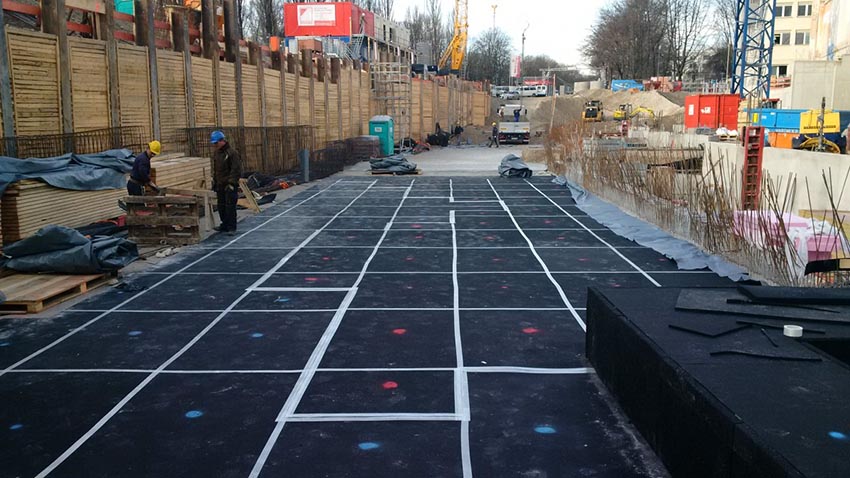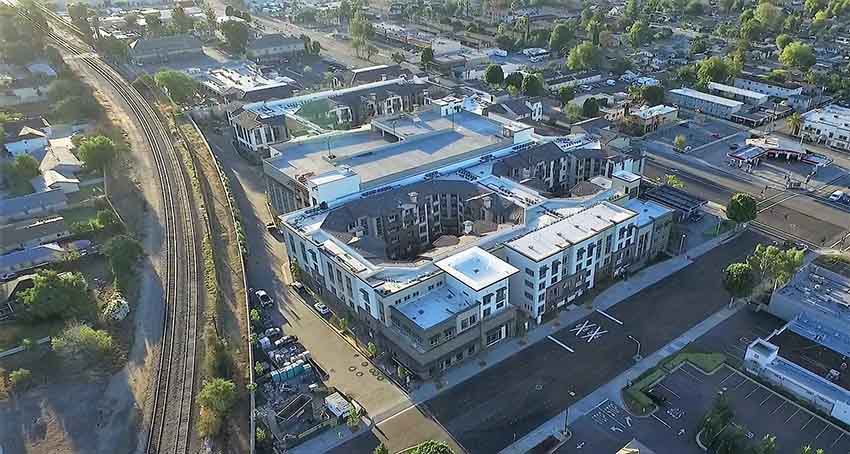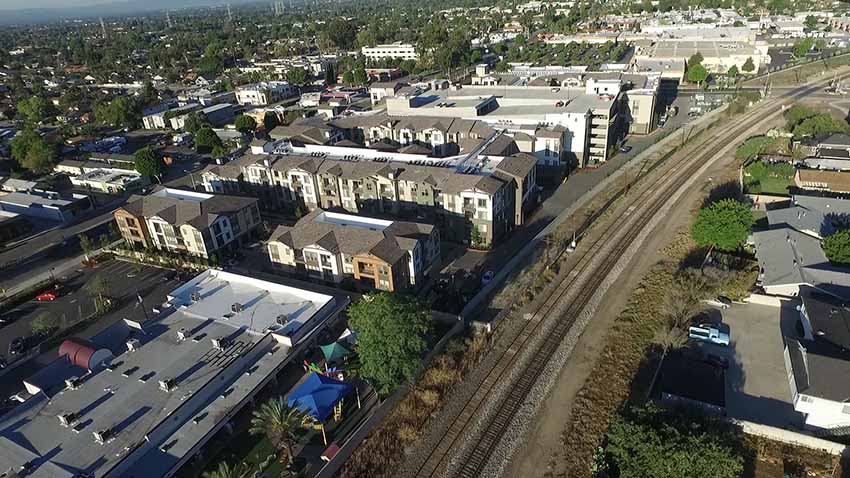Urbanization is increasing. According to United Nations forecasting, seven out of ten people will live in cities by 2050. Faced with a huge shortage of space, mixed-use concepts bring high-density tower blocks and space-saving neighborhood developments to life. However, maintaining quality of life and longevity in close proximity of living, working and leisure activities relies critically on specifying the right acoustic solutions.
The World Health Organization reports noise pollution as only second to air pollution in detrimental environmental health factors. In the post-COVID era of working from here, people are seeking live-work environments more than ever. But that means acoustics and building sound isolation are not only critical to the success and long-term viability of a development, it is the only sustainable way to build in cities where people will be living and working in the same building.
According to the WHO, excessive noise disturbs sleep, causes cardiovascular disease and has psychophysiological effects, such as reduced performance, elevated irritability, and changes in social behavior. Coping with exposure to excessive or incessant noise has been found to increase the risk of high blood pressure, stroke and heart attack.
A SILENT KILLER
“Poor acoustics is that silent killer. Think about distractions in your office—or home office,” says Sara Hickman, Sustainability Director at RDC-S111 in Long Beach, Calif. Hickman is a LEED AP, WELL AP and EcoDistricts AP. “Poor acoustics can be so abrupt, and when distracted by something abrupt, it really throws you.” She suggests focusing on typology, codes and zoning when specifying effective acoustic solutions. “In the end, they do bring a lot of value because of the rationale behind them.”

Her firm designs a lot of multi-family and affordable housing, which tends to be located right next to public transit and major freeways. “We’re constantly thinking about acoustics as early as conceptual design, and asking: ‘what are we doing besides specifying high performance glass that may or may not be value engineered out?’” When it comes to multi-family building acoustics, Hickman advises having an acoustical engineer on board to model and recommend an appropriate roof composition, and that architects specify robust wall assemblies.
REGUPOL, manufacturer of a comprehensive range of noise abatement products, offers wall and ceiling isolation systems to provide a reliable solution to effectively reduce airborne noise between rooms. The REGUPOL comfort product system, including underlayment, clips and adhesives, stops structure-borne noise by bridging the dry wall and the false wall. Excellent acoustic building values can be achieved with easy-to-install sonusclip rubber and metal fasteners—even where little wall mass is available. This offers acoustic technicians and architects alike a clear advantage when it comes to structural flexibility.
WORK FROM HERE IRL
In its latest newsletter, Dialogue Now, Gensler predicts the work from home trend in a post-COVID-era is here to stay. This may have residual effects on residential design, such as the need for an effective home office. In a WFH situation the Four Work Modes—focus, collaborate, learn and socialize—still apply, and need to be addressed by the space, say Gensler’s Tom Steidl and Brooks Howell. “Multifamily residential buildings will need to be rethought, both in terms of dwelling units and communal amenity areas.”

They explore how to do this by listing real-life WFH situations, including: How to focus when kids are home? How to collaborate effectively on video calls when you’re trying to block view of a pile of dirty dishes in the sink behind you? Do you really have an ergonomic workstation when you’re sitting in a dining room chair and your laptop is propped up on a pile of books on your dining table? Non-children, pet and spouse noise falls into the category of “other”.
Gensler’s workplace study points to research from the University of Illinois that found a high level of noise (85 dB and above) reduces information processing and hurts creativity. Moderate ambient noise (70 dB) introduces enough stimulus to promote abstract processing and imaginative thinking. Three of Gensler’s ten workplace acoustics strategies also apply to the planning, design and construction of mixed-use environments in the post-Corona era of WFH: Zoning, Sound Absorbing and Walls. These three strategies also correspond to the General Service Administration’s top three acoustic parameters used in acoustical design specifications: Background Noise, Noise Isolation and Sound Absorption.
BUILDING SOUND SOLUTIONS
REGUPOL has developed products that solve the problem of interference from noise in new and existing environments. The company offers a complete line of building acoustics materials that provide architects and engineers with a comprehensive toolbox of healthy acoustic specifications for longevity and a higher quality of life in densely populated urban centers.

REGUPOL underlayment products in the Comfort range addresses these areas. It includes CE-certified impact sound insulation products made of elastomer composites and an elastic, mass-increasing levelling fill. Not only have the systems been tested as per EN ISO standards but combine the necessary benefits for timber construction and renovation in one system: acoustic performance, low construction heights, fast and safe application. With CE certification, it can be installed with confidence throughout the European Economic Area.
MAKING THE CASE FOR BUILDING ISOLATION
REGUPOL documented a building project that demonstrates the sustained effectiveness of its products for more than 20 years. Installed in 1995 on a mixed-use building called Kapweg 3-8 in Berlin, the study shows that REGUPOL vibration 450 has continued to perform at peak levels of effectiveness for the past 20+ years. Despite train tracks running through the basement parking garage of Kapweg 3-8 and 20 years of encroachment of groundwater and sediment, readings taken in 1996, 2006 and 2018 show the REGUPOL sound and vibration-dampening products consistently performing at the original levels of effectiveness. Urban planners and developers can confidently invest in real estate that was previously thought of as unfit for building when they rely on the quality of REGUPOL products.
Future proofing mixed-use developments for noise pollution is only half the battle. Hickman reminds for multi-family projects to weather the VE process, specifiers must be strategic in finding solutions that offer a triple bottom line: a product that offers acoustic buffering, thermal conservation benefits and is economical. “Acoustic comfort is huge,” says Hickman. “And I feel like it’s been the unsung hero for a very long time. [Good] acoustics is a quiet but efficient design strategy.”

ABOUT REGUPOL
REGUPOL was established in 1954 and creates its products from high-quality plastics that have been recycled and reprocessed. With this approach, REGUPOL has become one of the leading suppliers of sports and safety flooring, antislip mats for load securing, products for impact sound insulation and vibration isolation, as well as protective and separating layers. In these market segments, REGUPOL has had over 65 years of experience. In many product groups, REGUPOL is already the market leader. The company headquarters is located in Bad Berleburg. Worldwide REGUPOL employs around 700 people, whose skills and specialist knowledge enable the company to provide the best solutions. The company’s subsidiaries are REGUPOL America LLC, REGUPOL Australia Pty. Ltd., REGUPOL Acoustics Middle East FZE, REGUPOL Schweiz AG, REGUPOL Zebra Athletics LLC and BSW Shanghai CO. LTD. Last year, REGUPOL achieved a turnover of €120 million and recycled 90 thousand tons of elastomers. For more information, visit www.regupol.com.
REGUPOL BSW GMBH
Tel.: +49 2751 803-0
Mail: acoustics@regupol.eu
Web: www.regupol.com

